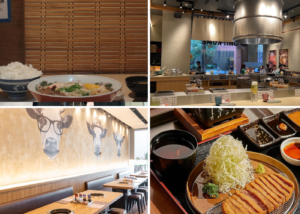In the competitive landscape of the fast-food industry, companies are constantly searching for ways to evolve and stay ahead of the curve. One notable strategy employed by many establishments is the phasing out of certain menu items, like Jollibee’s Lumpiang Shanghai, in favor of creating distinct brands and offerings. In this blog, we’ll explore the rationale behind these decisions and delve into how companies aim to improve sales by establishing unique and compelling brand identities.
The Farewell to Lumpiang Shanghai: A Strategic Move
1. Consumer Preferences and Evolution
Fast-food giants like Jollibee understand that consumer preferences can change over time. A dish that was once a favorite may no longer resonate with the evolving tastes of their target market. By phasing out items like Lumpiang Shanghai, they can make room for new, exciting offerings that better align with current trends.
2. Quality and Consistency
Maintaining consistency in the quality of menu items is crucial for customer satisfaction. Over time, if a particular item becomes challenging to produce consistently, it may no longer meet the company’s standards. In such cases, phasing it out becomes a logical decision.
Brand Differentiation: The Key to Improved Sales
1. Crafting Unique Brand Identities
Fast-food chains are increasingly recognizing the value of creating distinct brand identities for different offerings. Instead of trying to cater to every taste under one brand, they establish separate entities that specialize in specific cuisines or food types. This allows them to target niche markets more effectively.
2. Addressing Diverse Customer Demands
The phasing out of a specific menu item often coincides with the introduction of a new brand that caters to a different set of customer demands. For example, Jollibee may phase out Lumpiang Shanghai to make way for a new brand specializing in Mexican cuisine, thus capturing a different segment of the market.
3. Market Expansion and Adaptation
Creating distinct brands enables fast-food companies to expand into new markets with ease. If they find that a particular brand isn’t performing as expected in a particular region, they can adjust their offerings or introduce a new brand to better suit local tastes and preferences.
The Impact on Sales and Customer Experience
While the phasing out of familiar items may initially disappoint some customers, the strategy of brand differentiation can lead to several positive outcomes:
1. Improved Sales and Profitability
By targeting specific niches and addressing diverse customer demands, companies can boost sales and profitability. Each brand can become a revenue generator in its own right.
2. Enhanced Customer Experience
With specialized brands, customers can expect a more tailored and authentic experience. This approach allows companies to excel in their chosen areas of expertise.
3. Innovation and Freshness
The introduction of new brands often comes with a focus on innovation and freshness, which can revitalize a company’s image and appeal to a broader customer base.
Phasing out food items like Jollibee’s Lumpiang Shanghai may be met with mixed feelings, but it’s part of a strategic effort to keep pace with ever-changing consumer preferences and market dynamics. Companies in the fast-food industry are discovering the benefits of creating distinct brands that cater to specific tastes and niches, ultimately leading to improved sales and enhanced customer experiences. As consumers, we can look forward to a more diverse and exciting fast-food landscape as these brands continue to evolve and innovate.




